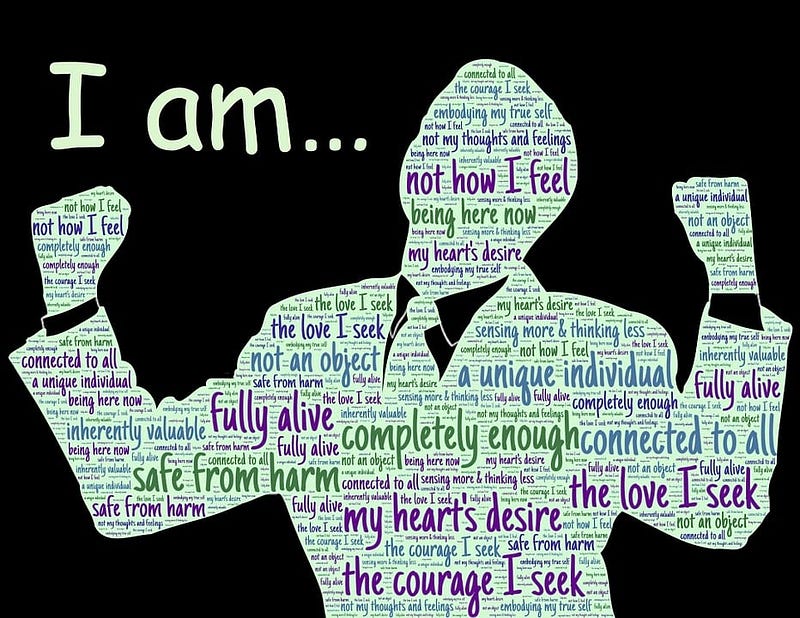The Evolutionary Advantage to Transgender
When the weather is fair, I like to run barefoot.


I typically run about three miles around my neighborhood, which has concrete sidewalks. When people see me running barefoot, they tend to ask about it. After all, human feet are fragile, aren’t they? They require arch support, heel padding, and Kevlar shields in case of rocks. This is what shoe manufacturers tell us. They would not lie to sell shoes, would they?
The answer to those questions lies in evolution. Humans have evolved as a result of adaptations that help the species survive. But evolution can be applied to more than human structure and biochemistry. Evolutionary psychiatry attempts to explain how human brain chemistry and psychology have evolved. The transgender experience so hotly debated today must represent an evolutionary adaptation that helped our species survive to the present. Otherwise, the trait would have evolved out of human behavior. What advantage could transgender provide to those who express it?
Evolution Unbound
The theory of evolution explains how a species changes over time in response to changes in its environment. The interaction of organism and environment is critical: genetic mutations are common, but a mutation that provides an advantage to organisms that express it has a better probability of surviving. When the advantage improves the chances of the organism reproducing, the mutation is called an adaptation and typically becomes part of the genome of the species. The better a genotype can reproduce, the higher the probability that it will, now and in the future.
In 1957, George Williams made an interesting observation about evolution. He realized that evolution is driven solely by reproduction, not the overall health of the organism over its lifetime. That is, an adaptation may have horrible effects in early or later years of the organism’s life, but if it improves the chances of reproduction, the genotype will survive. Williams’s paper applied this hypothesis to human aging to explain why humans ultimately die.
Evolutionary Biology and Psychiatry
Because evolution is driven by an interaction between organism and environment, evidence of environmental changes could explain why traits observed in humans today improved the chances of reproduction for humans who expressed the traits millennia ago. This field of study is called evolutionary biology. I opened this article with barefoot running, one of the original evolutionary hypotheses Daniel Lieberman contributed. Lieberman hypothesized that homo sapiens survived over homo neanderthalensis because we are better able to regulate heat and metabolism, which made homo sapiens natural runners. (In other words, yes, the shoe companies are lying to sell shoes.)
Taking the evolutionary model for physical adaptation further, evolutionary psychiatry (also psychology) studies why organisms behave the way they do. One of the common models used in evolutionary psychiatry is George Engel’s biopsychosocial model, which links behavior to the interconnections among biology, psychology, and socio-environmental factors. The primary hypothesis of the model is that genetic predispositions for mental health disorders must be triggered by social and cognitive factors. This matches closely with part of the model for identity I postulated previously.

Where evolutionary biology explains why human structure and biochemistry have adapted to the environment of Earth, evolutionary psychiatry explains why human behavioral patterns persist. Depression, for instance, may have helped early humans let go projects beyond our capability. Anxiety may have helped early humans avoid danger. In moderation, both depression and anxiety are valuable to humans. In excess, both may become pathological, but the traits must have helped humans who expressed them reproduce and pass on the traits.
Mechanism of Evolutionary Psychiatry
How psychological traits could be heritable is a matter of debate. Psychiatry focuses on biochemical causes for behavior, but many studies cast doubt on pharmacological treatments. A search on PubMed shows more than 4000 abstracts on the efficacy of antidepressants in the last five years alone. In his recent book about evolutionary psychiatry, Randolph Nesse[1] states:
Almost four decades of intense research [after publication of DSM-III], no laboratory test is yet available to diagnose any of the major psychiatric disorders.
What about the biopsychosocial model as a whole? A major criticism of the model indicates the lack of emphasis on experience of the person being studied: the subjective well-being (SWB). If a person does not feel symptoms are troublesome, the symptoms are not reported. Humans have the ability to mitigate the effects of mental health disorders in a manner that evolutionary biology cannot. That is, the complete reaction to biology, psychology, and socio-environmental factors depends on a component outside them.
The model I propose includes a spiritual aspect to identity. (“Spiritual aspect” is the woo-woo way of saying what the previous paragraph said. I just happen to be bold enough to use the appropriate wording.) It is the composite of biology, psychology, and socio-environmental factors quickened by a consciousness outside the physical realm that defines a complete identity.
If we cannot trust biochemistry to reflect mental health, and the major model of evolutionary psychiatry misses on at least the ability of humans to react unpredictably, how can patterns of thought be passed down to progeny? The obvious answer is that progeny learns by observation — nurture outdoing nature. To be clear, biochemical mechanisms have not been ruled out. It might be we have not discovered their effects yet.
The Transgender Advantage
What evolutionary adaptation does transgender provide? How could it be similar to symptoms of depression or anxiety? Most importantly, how could transgender improve the probability of reproduction and inheritance of the trait? A common missile aimed at lesbian and gay communities is that they will go away soon. After all, they take themselves out of the gene pool during their reproductive years. That said, evidence of lesbian, gay, bisexual, transgender, and nonbinary experiences has been dated well past 5,000 years ago, possibly as many as 20,000 years [2].
To explain the persistence of human LGBTQ behavior, I return to the etymology of the word “gender.” The proto-Indo-European (PIE) root *gene- implies identity as membership in a tribe. Although aspects of the LGBTQ experience may not result in physical reproduction, when the overall strength of a tribe is improved, its probability of surviving improves. Transgender is an evolutionary adaptation that ensures all effort in a gender role is accomplished, regardless of physical structure.
Gender Roles Revisited
Early humans were concerned about accomplishing survival goals. The physical sex of the person performing the work was unimportant as long as the work was finished. Only in more recent times has society set such strict limits on gender roles. The idea of the male CEO and the female nurse is not universal across culture or time. While Western society today may not understand the value of standing together for the overall good of the tribe, our ancestors most certainly depended on it.
Transgender people are capable of expressing a greater fraction of the gender spectrum than cisgender people. Because of fluidity in their cognition, transgender people can blend into roles associated with both genders. The advantage of fluidity to the individual may appear subtle, but the overall advantage to the tribe is immense. Transgender only seems odd in modern times because Western society demands a binary of gender roles that our ancestors did not.
Despite Williams’ assertion above that reproduction is the motive power of evolution from a physical standpoint, psychology expands outside the physical individual. Psychology feeds society and culture. For a culture to last, there must be people capable and willing to carry it forward. I am confident that — when considering how humanity has managed to last into present times — it is appropriate to thank lesbian, gay, bisexual, transgender, and nonbinary people.
Brothers and sisters, you have my gratitude.




